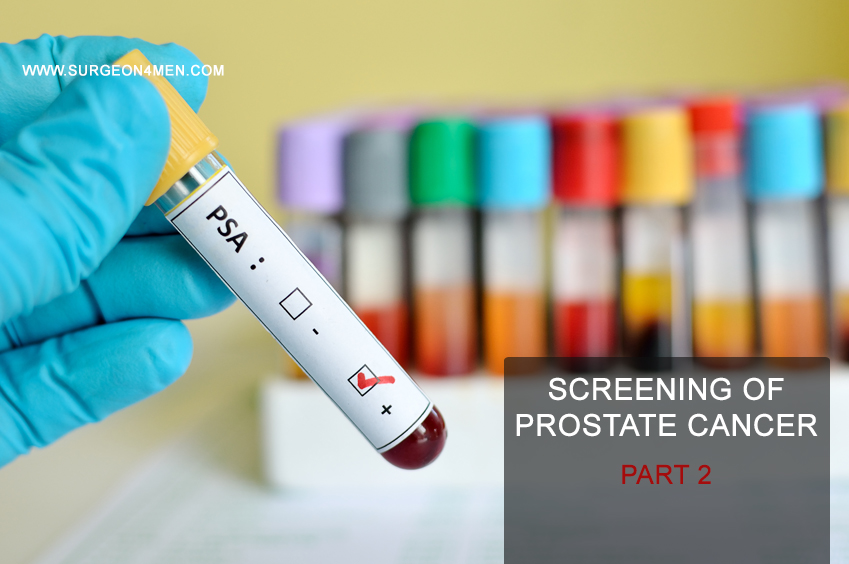Screening of Prostate Cancer
According to the statistics recorded by the Centers for Disease Control and Prevention (1), prostate cancer is the most frequently diagnosed malignancy in males that affects 14% of the male population at some point in their life. It has been observed that approximately 6 of every 10 males who are diagnosed with prostate cancer are over the age of 65 years. In other words, the risk of malignancy is very low in males under the age of 40 years. This characteristic pattern and specificity of demographics has made it easier for investigators to formulate screening guidelines for the early identification of prostate cancer.
What cautions to maintain while performing PSA test?
The reliability and specificity of PSA test varies in certain situations. For example, PSA levels are generally high after masturbation or sexual intercourse (which is why, sexual activities should be avoided for 24 hours before the test). Other conditions that may affect PSA levels in the serum are:
- Benign prostate hyperplasia
- Infection of prostate gland (prostatitis)
- Medical procedures that involve urinary/ pelvic region in males

- Some pharmaceutical agents (such as Thiazide diuretics, 5-alpha reductase inhibitors, statins, aspirin)
Other screening varieties of PSA test include:
- Percent-free PSA (a prostate biopsy is recommended if percent-free PSA levels are between 10% and 25%.
- PSA Density: Higher than normal density indicates a possible prostate cancer
- PSA Velocity: Higher than normal velocity indicates a possible prostate cancer
According to a study reported in the British Journal of Urology (5), investigators explained that high PSA levels should always be followed by biopsy (regardless of the symptomatology).
It is imperative to mention that the key to ideal screening and prevention of advanced prostate malignancy is creating awareness and spreading clinical knowledge about this potentially lethal cancer. This is mainly because, only less than 1% of the general population is aware of the fact that prostate malignancy can be asymptomatic. However, in reality, more than 30-50% cases of prostate malignancy are not associated with lower urinary tract symptoms unless the malignancy is in advanced stages.
References:
1. http://www.cancer.org/cancer/prostatecancer/detailedguide/prostate-cancer-key-statistics
2. http://www.cdc.gov/cancer/prostate/basic_info/screening.htm
3. Wolf, A., Wender, R. C., Etzioni, R. B., Thompson, I. M., D’Amico, A. V., Volk, R. J., … & Smith, R. A. (2010). American Cancer Society guideline for the early detection of prostate cancer: update 2010. CA: a cancer journal for clinicians, 60(2), 70-98.
4. De, S., Das, R. K., & Mukherjee, S. (2014). Role of Prostate Specific Antigen, Digital Rectal Examination and Trans Rectal Ultrasonography in the Diagnosis of Prostate Cancer in Patients with Lower Urinary Tract Symptoms. Archives of Clinical and Experimental Surgery (ACES), 3(1), 40-46.
5. Frånlund, M., Carlsson, S., Stranne, J., Aus, G., & Hugosson, J. (2012). The absence of voiding symptoms in men with a prostate‐specific antigen (PSA) concentration of≥ 3.0 ng/mL is an independent risk factor for prostate cancer: results from the Gothenburg Randomized Screening Trial. BJU international, 110(5), 638-643.

